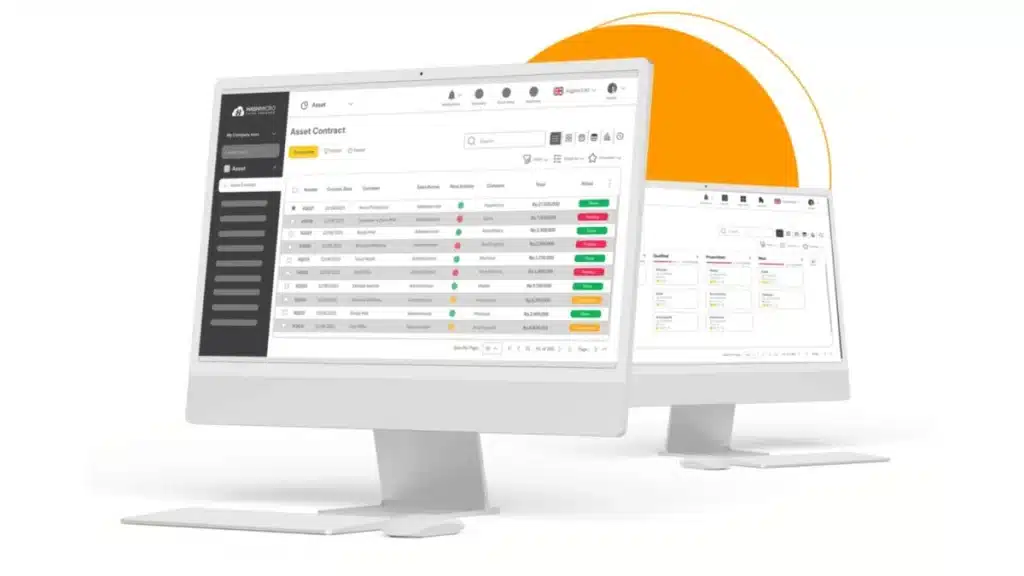Your assets are scattered, your operations are a mess, and profits are slipping through the cracks. Sound familiar? It’s a nightmare that many Filipino business owners face. Without proper asset inventory management, your business can quickly spiral into chaos—delays, missed opportunities, and disappointed customers become the norm.
Worse still, you’re either overstocking or running out of crucial resources, shambling your cash flow. Money that should be fueling growth is instead wasted on mismanaged inventory control. This is why mastering asset inventory management is your business’s lifeline to survive and thrive in today’s cutthroat market.
But don’t worry—it’s not too late to turn things around. You can regain control, boost efficiency, and see profits soar with the right asset inventory management strategies. Ready to learn how? Read on to discover techniques and tools that will transform how you manage your assets!
Key Takeaways
|
Table of Contents

What is Asset Inventory Management?
Asset inventory management is the organized process of tracking, overseeing, and maintaining a company’s assets, both physical and digital. This includes everything from office equipment, machinery, and tools to software licenses, intellectual property, and even employee devices.
Businesses can ensure they are used effectively and securely by having a clear, up-to-date record of all assets, including ghost assets. Given the country’s rapidly shifting business environment, asset inventory management has become increasingly essential for Filipino companies.
By adopting this approach, companies in the Philippines can prevent unnecessary expenditures, improve resource allocation, and pave the way for long-term sustainable growth. Moreover, it allows for better compliance with regulations and boosts customer satisfaction by ensuring that assets are available and functional when needed.
The Importance of Effective Asset Inventory Management
Proper asset inventory management is essential for Filipino businesses, particularly in industries such as retail, manufacturing, and logistics. It ensures assets are available and in optimal condition when needed, reducing the risk of disruptions that can lead to production delays and financial losses.
The importance of effective asset inventory management includes the following:
- Operational Efficiency: Helps streamline business processes by ensuring that assets are always in working condition and ready for use.
- Cost Control: Prevents unnecessary expenditures by reducing asset losses, breakdowns, and overstocking, which can strain financial resources.
- Accurate Budgeting and Forecasting: Provides data that supports more precise budgeting, forecasting, and resource allocation for better financial planning.
- Informed Decision-Making: Allows businesses to make timely decisions on maintenance, upgrades, and future investments based on real-time asset tracking.
- Compliance and Risk Management: Aids in meeting regulatory requirements and reducing risks associated with theft, misuse, or misplacement of valuable assets.
Filipino companies can set the foundation for long-term growth by focusing on asset inventory management. A well-maintained asset inventory enhances strategic planning and ensures assets are used efficiently. This improves operational productivity and allows companies to stay agile.
Types of Assets in Inventory Management
In inventory management, assets are generally divided into three categories: physical, digital, and human resources. Each type plays a distinct role in business operations, making it crucial to track and manage them effectively.
| Assets | Explanation |
|---|---|
| Physical Assets | These include machinery, vehicles, office equipment, tools, and inventory stock—all essential for daily business functions. |
| Digital Assets | Cover software, digital data, intellectual property, and online licenses. Managing these assets is vital for operational efficiency and security. |
| Human Resources | Often overlooked, this category includes the skills, knowledge, and expertise of employees who contribute significantly to a company’s success. |
Retailers and manufacturers track physical assets like equipment and inventory, while modern businesses emphasize digital asset management for customer data and software tools. By effectively managing all three asset types, companies can streamline operations and enhance overall productivity.
Asset Inventory Management Techniques
Effective asset inventory management relies on several techniques to optimize asset use and minimize waste. Choosing the right approach is crucial when business demands fluctuate rapidly. By implementing these methods, companies can maintain better control over their assets and enhance operational efficiency.
- Just-in-Time (JIT): This technique focuses on acquiring assets only when they are needed, reducing inventory costs and minimizing wastage. It’s particularly beneficial for businesses that keep their operations lean and cost-effective.
- First In, First Out (FIFO): FIFO prioritizes using the oldest assets first, which helps minimize the risk of obsolescence or expiration. This method ensures product quality and customer satisfaction for Filipino businesses.
- Last In, First Out (LIFO): Unlike FIFO, LIFO involves using the newest assets first. This method benefits companies dealing with fluctuating market prices, such as those in the Philippine construction industry, helping them maintain cost stability.
- Always Better Control (ABC) Analysis: ABC Analysis categorizes assets into three groups based on their value and importance. This approach allows Filipino businesses to focus on high-value assets while monitoring less critical ones.
By adopting these techniques, companies in the Philippines can streamline their asset management processes with asset management system to reduce unnecessary costs and ensure that their resources are utilized in the most efficient way possible. This strategic approach can provide a competitive edge, especially in fast-paced markets.
Read more: Top Construction Inventory Management Software
Asset Management vs. Inventory Management
The two might sound similar, but they have different roles in a business. Asset management is about tracking and maintaining long-term items like equipment, machinery, vehicles, and office tools. These are assets that a company uses over many years to support its operations.
On the other hand, inventory management focuses on monitoring stock levels of products or goods meant for sale, such as items in a retail store, raw materials in a factory, or supplies in a warehouse.
While both are important for smooth business operations, they serve different purposes. Asset management ensures that the company’s valuable asset are always in good condition and available. Inventory management, however, makes sure there is enough stock on hand to meet customer demand without having overstock.
Understanding the difference between these two is crucial for businesses to create effective strategies for managing assets and inventory efficiently. For Filipino business owners, recognizing the distinction between asset and inventory management is key to improving overall productivity.
Benefits of an Automated Asset Inventory Management System
Implementing an automated asset inventory management system can bring numerous advantages to a business. By automating asset tracking and documentation, companies can improve accuracy and reduce the risk of human errors.
Some of the benefits of using an automated system are:
- Improved Data Accuracy: Automated systems minimize human errors, ensuring all asset information is precise and up-to-date.
- Enhanced Efficiency: Streamlining asset management processes reduces the time and effort needed for inventory checks and asset tracking.
- Cost Savings: Automation prevents overstocking and understocking, helping businesses in the Philippines save money by reducing excess inventory and avoiding asset mismanagement.
- Real-Time Data Insights: Access to real-time data allows companies to make quicker and more strategic decisions, optimizing their operations.
- Better Decision-Making: The system provides insights that support long-term planning, such as when to maintain, upgrade, or replace assets.
For businesses in the Philippines, adopting an automated asset inventory management software is a smart move toward boosting efficiency and cutting costs. With accurate, real-time data, companies can make informed decisions and drive growth in a rapidly changing market.
Best Practices for Asset Inventory Management
Effective asset management requires keeping detailed, up-to-date records and conducting regular audits for accuracy and consistency. Prioritize high-value assets using techniques like ABC Analysis, which categorizes assets based on their importance and value.
Additionally, investing in real-time tracking software helps quickly identify issues and ensures smooth asset management operations. Filipino businesses should adapt asset management practices to suit their industry needs and market demands.
Retailers should focus on tracking stock turnover efficiently, while manufacturers should prioritize proper machinery maintenance and upgrades. Aligning these practices with business goals optimizes asset use and boosts overall performance.
Read More: Top Manufacturing Inventory Software
How to Choose the Right Asset Inventory Management Software
When selecting asset inventory management system, look for scalability, integration capabilities, and user-friendliness. The software should adapt to changing business sizes and integrate seamlessly with existing systems, simplifying operations.
Ensure it includes options for real-time tracking, detailed reporting, and data security to protect valuable assets. Filipino business owners should prioritize software with localized support and customization for the Philippine market’s needs.
This includes compliance with local regulations, language preferences, and industry-specific requirements for retail, manufacturing, and logistics sectors. Choosing software that fits these criteria ensures smooth implementation, long-term effectiveness, and optimal asset performance management.
HashMicro’s Asset Management Software to Boost Inventory Management Efficiency

Key features of HashMicro’s Asset Management Software include:
- Asset Maintenance Budget: Allows businesses to plan and allocate budgets for regular maintenance, reducing unexpected repair costs.
- Asset Stock Take with Barcode: Simplifies inventory audits with barcode scanning, ensuring quick, accurate, and hassle-free asset tracking.
- Employee Asset Management: Keeps a detailed record of assets assigned to employees, improving accountability and asset utilization.
- Fully Integrated with Accounting: Tracks asset depreciation and provides financial insights by integrating seamlessly with the accounting system and the business budgeting software.
- QR Code Scanning for Facilities Requests: Enables easy asset identification and maintenance requests, ensuring prompt action and efficient asset upkeep.
By leveraging these features, businesses can automate asset management tasks with comprehensive asset management software, reduce errors, and maximize the value of their assets. This improves inventory efficiency and supports better resource planning and long-term profitability.
Conclusion
Effective asset inventory management is the backbone of smooth operations, cost control, and strategic planning for Filipino businesses. From understanding the different asset types to implementing best practices, businesses can streamline processes, minimize losses, and optimize resources.
Moreover, differentiating asset management from inventory management enables companies to build comprehensive strategies supporting daily operations and long-term growth. This holistic approach is vital for thriving in competitive markets.
Choosing the right asset management software can further boost efficiency and accuracy. Solutions like HashMicro’s Asset Management Software offer automated tracking, real-time insights, and essential features like maintenance budgeting and accounting integration.
Ready to transform your asset management approach? Book a free demo today and see how our software can help your business achieve its full potential.
Frequently Asked Question
-
What are the 6 types of assets?
The six types of assets include physical, digital, financial, intangible, natural, and human resources. Each type plays a key role in supporting different aspects of business operations.
-
What are the assets of inventory?
Inventory assets include products for sale, raw materials, and goods in production or storage. Proper tracking ensures enough stock to meet demand without excess waste.
-
What are the 3 classifications of assets?
Assets are classified into current, fixed, and intangible assets. Current assets are short-term, fixed assets are long-term like equipment, and intangible assets include intellectual property.


























